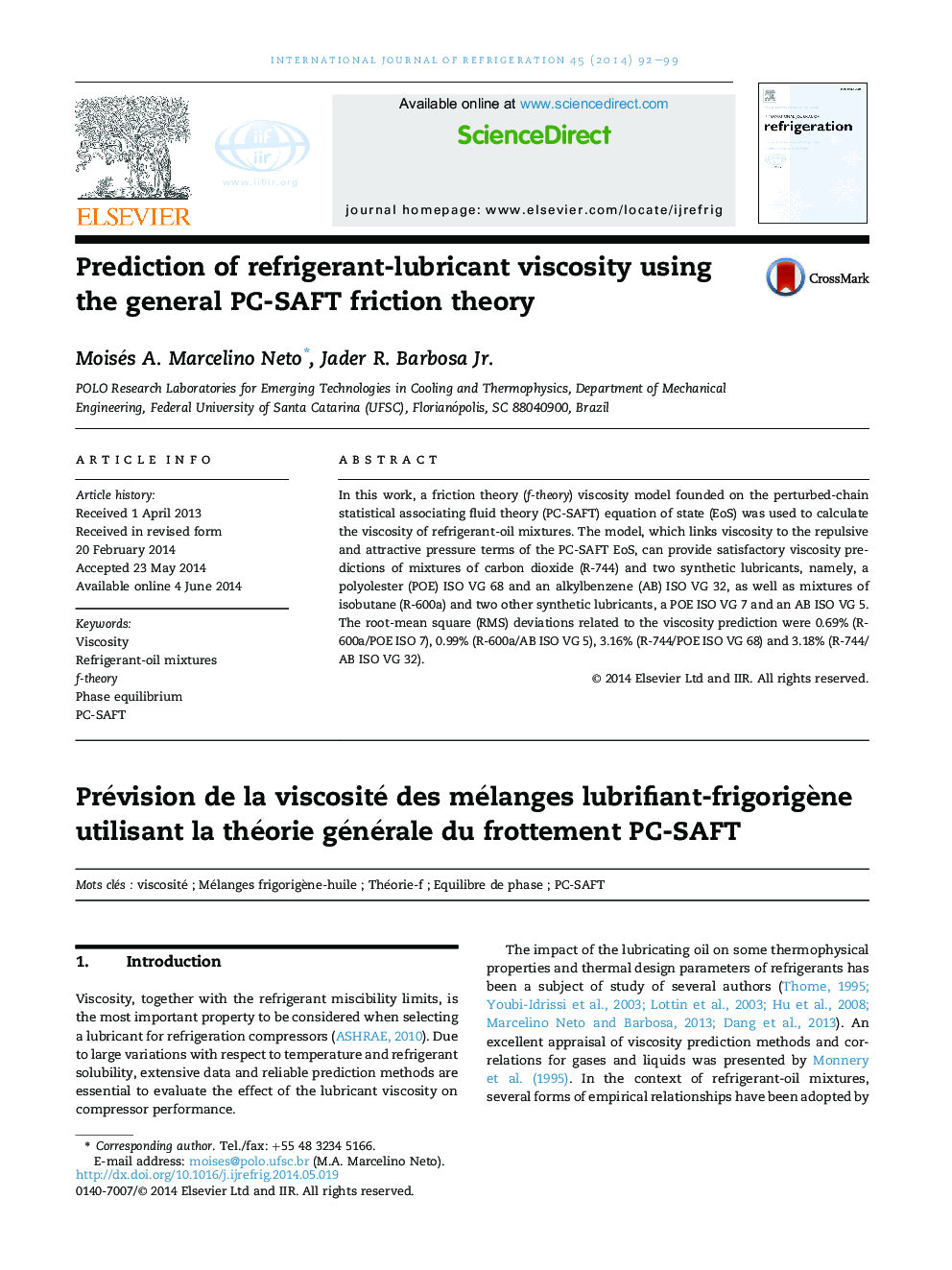| Article ID | Journal | Published Year | Pages | File Type |
|---|---|---|---|---|
| 789344 | International Journal of Refrigeration | 2014 | 8 Pages |
•A general PC-SAFT f-theory model was used to correlate the viscosity of refrigerant-lubricant oil mixtures.•This model gave satisfactory results for systems involving R-600a and R-744.•PCSAFT f-theory demonstrated excellent performance compared to other modeling based on the Eyring theory.
In this work, a friction theory (f-theory) viscosity model founded on the perturbed-chain statistical associating fluid theory (PC-SAFT) equation of state (EoS) was used to calculate the viscosity of refrigerant-oil mixtures. The model, which links viscosity to the repulsive and attractive pressure terms of the PC-SAFT EoS, can provide satisfactory viscosity predictions of mixtures of carbon dioxide (R-744) and two synthetic lubricants, namely, a polyolester (POE) ISO VG 68 and an alkylbenzene (AB) ISO VG 32, as well as mixtures of isobutane (R-600a) and two other synthetic lubricants, a POE ISO VG 7 and an AB ISO VG 5. The root-mean square (RMS) deviations related to the viscosity prediction were 0.69% (R-600a/POE ISO 7), 0.99% (R-600a/AB ISO VG 5), 3.16% (R-744/POE ISO VG 68) and 3.18% (R-744/AB ISO VG 32).
